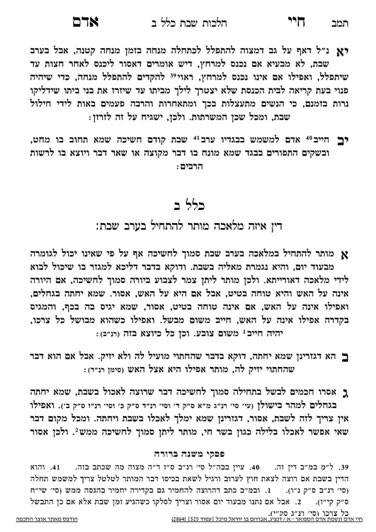We are continuing in siman 3, where the Chayei Adam introduced the idea that it is assur to put up food to cook before Shabbos, unless it will be ready by the time that Shabbos begins without the person’s intervention. There is a machlokes between the Shulchan Aruch and Rema regarding when we consider food to be “ready”. The Shulchan Aruch holds it refers to food which is fully ready, meaning that a host would be comfortable serving it to guests. If it is less than this level, we are concerned the host will attempt to improve the item by stirring the coals. However, the Rema holds that as long as the food is edible, it is considered ready. If it is not edible, we are concerned a person will stir the coals. Once it is edible, the need to stir the coals is not as intense, so we are not as concerned that a person will stir the coals.
The Chayei Adam writes that the Gemara defines “ready” regarding bread as when it develops a crust. He explains that this stage is the stage where if one were to break the bread open, it would not be stringy. The Chayei Adam paskens in accordance with the Rema, so regarding bread, even if it is not fully baked, there is less of a need to hasten the bishul once it is no longer stringy. Such a bread can continue to bake from before Shabbos into Shabbos.
The Chayei Adam writes that a type of knish known as a pastida or faladin will have two considerations, the dough part and the food inside, and one would have to be sure that both parts are considered halachically ready to be eaten before Shabbos..
Next, we need to define the point in time we are referring to as “before Shabbos”. There are three potential times to consider:
- When a person accepts Shabbos, such as if a person makes early Shabbos;
- The beginning of bein hashmashos, which we will assume is when the sun sets (as defined by the Mishnah Berurah);
- Nightfall, when it is definitely Shabbos.
- In order to put up food before Shabbos which will cook into Shabbos, the food must be at least edible before sunset.



